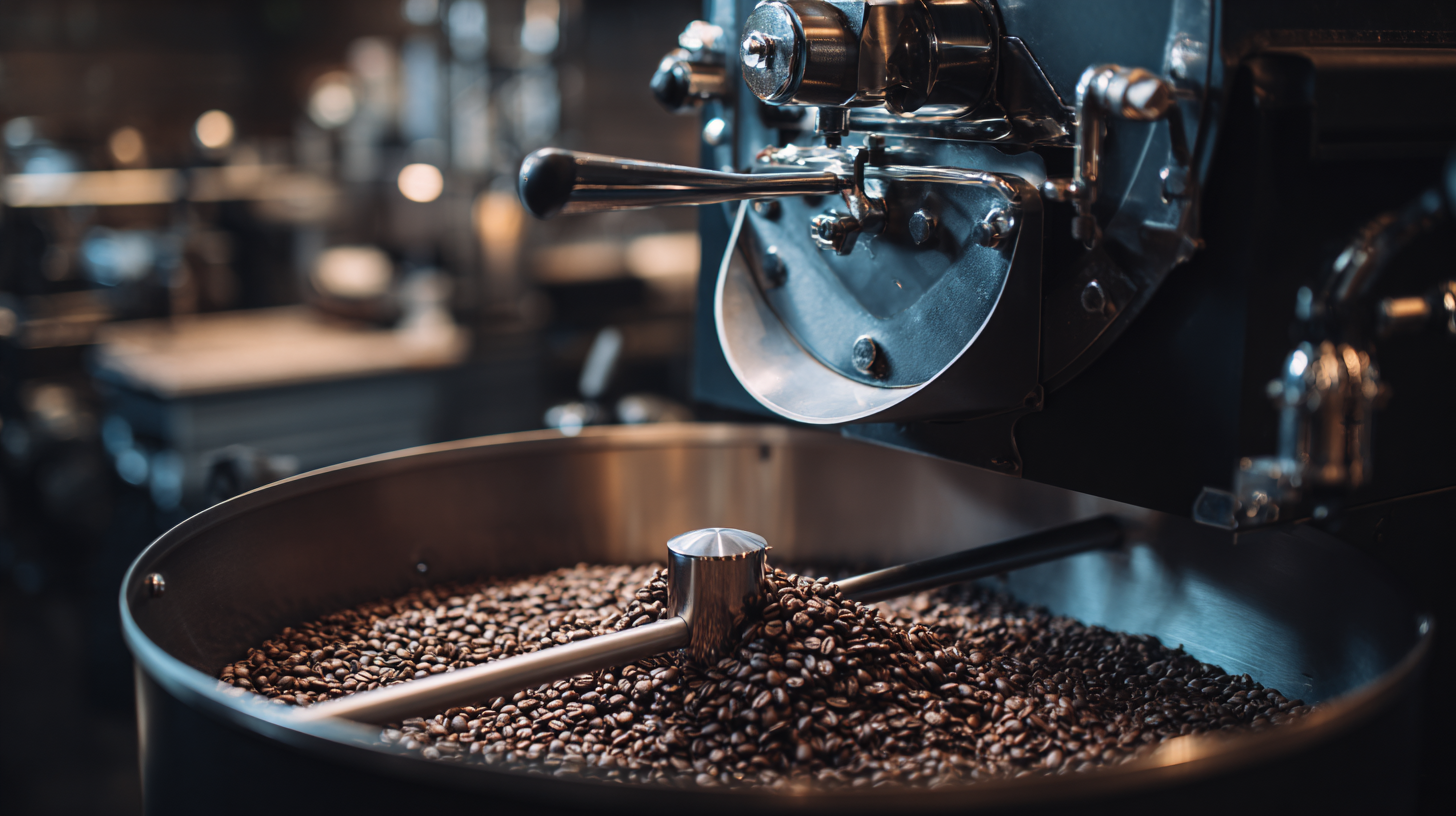What Makes the Best Coffee Roaster Stand Out in the Market
In an evolving coffee landscape, the role of the coffee roaster has become increasingly paramount as consumers develop a discerning palate and demand for quality rises. According to the Specialty Coffee Association, the global coffee roastery market is projected to grow at a compound annual growth rate (CAGR) of 10% through 2025, highlighting the burgeoning competition among coffee roasters to distinguish themselves in a crowded marketplace. As sustainability and artisanal methodologies gain traction, the best coffee roasters stand out not just by offering superior flavor profiles but also by embracing innovative roasting technologies and sustainable sourcing practices. In this blog, we will delve into the key attributes that elevate exceptional coffee roasters above their peers, exploring both technological trends and practical strategies essential for success in this dynamically changing industry.

Key Features to Evaluate in a Professional Coffee Roaster
When evaluating a professional coffee roaster, several key features can distinguish the best in the market. First and foremost, temperature control is critical; precise temperature management is essential for achieving consistent roast profiles. According to recent market analytics, roasters with advanced temperature profiling capabilities can produce coffee that is 20% more aromatic and flavorful than those that don't. The ability to monitor and adjust temperature in real-time allows roasters to experiment with diverse coffee types, leading to unique flavor outcomes that satisfy discerning customers.
Another important feature is the roaster's capacity and batch size. Many top-tier roasters offer versatility in batch sizes, accommodating both small artisan batches and larger commercial production runs. Industry reports suggest that consumers are increasingly drawn to specialty coffee, with a 12% yearly growth in the segment over the past five years. This shift emphasizes the need for roasters that can adapt to varied demands while maintaining quality.
Tips for choosing the right coffee roaster include looking for models that provide detailed logging capabilities. This feature enables roasters to replicate successful batches with precision. Additionally, consider the energy efficiency of the roaster; models that incorporate eco-friendly practices can save up to 30% on operational costs. Investing in a roaster with both quality and sustainability in mind not only benefits the environment but can also enhance brand appeal.
Key Features to Evaluate in a Professional Coffee Roaster
Understanding the Different Types of Coffee Roasters Available
When exploring the world of coffee roasting, understanding the different types of coffee roasters available is essential for both enthusiasts and professionals. Coffee roasters come in various forms, each offering unique capabilities and results. For instance, drum roasters are favored for their ability to produce even roasting and depth of flavor. They rely on rotating drums to ensure uniform heat transfer, allowing for a fuller profile in roasted beans.
On the other hand, air roasters utilize hot air to roast the beans, which can create a cleaner taste, appealing to those who prefer a brighter coffee experience.
Additionally, advancements in technology have introduced electric roasters, which provide energy efficiency and greater control over the roasting process. These machines are becoming increasingly popular among roasters who seek consistency and precision in every batch.
Furthermore, a recent study revealed that all Arabica coffee beans exhibit a universal color development pattern during roasting, highlighting the importance of monitoring visual cues to achieve the desired roast profile. By utilizing the right type of roaster and understanding the science behind coffee roasting, you can elevate your brewing experience and enjoy the nuances of different coffee varieties.
Essential Technology and Equipment for Optimal Roasting
When it comes to coffee roasting, the right technology and equipment can significantly elevate the roasting process. First and foremost, a high-quality coffee roaster is essential. Machines that feature precise temperature control and advanced software allow roasters to fine-tune their profiles for each batch, ensuring consistency and depth in flavor. Roasters equipped with thermal and bean mass sensors provide real-time data, helping roasters make necessary adjustments during the process.
In addition to the roaster itself, ancillary equipment plays a crucial role in achieving optimal results. A robust cooling system is imperative to halt the roasting process immediately after the desired roast level is reached. Moreover, tools like moisture meters and professional-grade grinders contribute greatly to the quality of the end product. These devices not only help in controlling the roasting parameters but also enhance the overall efficiency and reliability of the roasting operation, allowing coffee businesses to stand out in a competitive market.

Factors Influencing Flavor Profiles in Coffee Roasting
In the world of coffee roasting, several key factors significantly influence flavor profiles, making it essential for roasters to understand the science behind each batch. One of the primary elements is the origin of the coffee beans. According to the Specialty Coffee Association, beans from different regions possess unique flavor characteristics due to variations in soil, climate, and cultivation practices. For instance, Ethiopian coffees are known for their bright acidity and fruity notes, while Brazilian beans often deliver a more chocolatey, nutty profile. This regional diversity directly impacts consumer preferences and market trends.

Another crucial factor is the roasting process itself, which includes variables like temperature, duration, and airflow. A study published in the Journal of Agricultural and Food Chemistry revealed that altering the roasting temperature by just a few degrees can enhance or mute specific flavor attributes. For example, lighter roasts typically preserve the beans' inherent acidity and floral notes, while darker roasts tend to develop robust, smoky flavors. This level of precision in roasting allows skilled roasters to tailor their products to meet the evolving tastes of coffee enthusiasts, thereby standing out in a competitive market.
Importance of Sustainability and Sourcing in the Roasting Process
When it comes to coffee roasting, sustainability and sourcing are critical factors that differentiate the best roasters from the rest. According to a report by the Specialty Coffee Association, approximately 86% of consumers consider sustainability an important factor in their purchasing decisions. This growing demand for ethically sourced coffee means that roasters must be transparent about their sourcing practices and committed to environmentally friendly methods.
The importance of sourcing cannot be overstated—research indicates that coffee sourced from sustainable farms often features higher quality beans and enhanced flavor profiles. A study published in the Journal of Sustainable Agriculture revealed that coffee from certified farms can yield up to 30% better quality due to optimized agricultural practices. These practices ensure that farmers receive fair wages and maintain environmentally sound methods, which ultimately leads to a higher quality product for consumers. Consequently, the best coffee roasters not only prioritize exceptional flavor but also place a strong emphasis on building reliable relationships with growers to foster transparency and sustainability throughout the supply chain.


